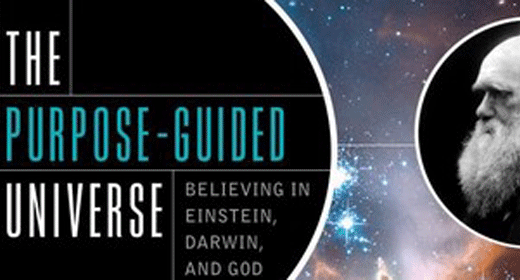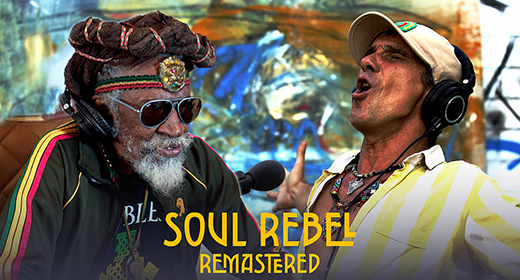By Lauren Krauze: Dream Yoga expert Andrew Holecek explains how tapping into our lucid dreams can help us better understand—and even enhance—our waking life.

Some nights, after we close our eyes, we soar over vast, moonlit deserts or tiptoe through strange city streets slickened with ice. Other evenings, we find ourselves sitting on a creaky dock, bare feet suspended over a murky pond, chatting with former lovers, childhood friends, or deceased grandparents. Just before dawn, we may open our eyes and recall only mere fragments of our dreams: the wallpapered waiting room, the lone whistle of a tea kettle, the sensation of feeling lost, hurried, or alone.
“When you’re working with your dreams, you’re really working with your mind,” says Andrew Holecek, a spiritual teacher, author of the book Dream Yoga: Illuminating Your Life Through Lucid Dreaming and the Tibetan Yogas of Sleep.
Lucid dreaming is the phenomenon that happens when you realize that you’re dreaming as it’s happening; dream yoga occurs when you use this lucidity for your own practice. Dream Yoga, rooted in the Tibetan Buddhist tradition, allows us to “hack into the previously unconscious” and use our dreams to transform our waking lives.
In a recent conversation, Holecek explained the nature of dreams and nightmares and how we can extend our meditation practice into our sleeping hours.
You’ve said that dream yoga goes to the heart of Buddhism. What do you mean by that?
At the heart of the Buddhist tradition are the teachings on emptiness. More practically, the core teaching of Buddhism is the alleviation of suffering. We suffer because we take things to be real, and we suffer in direct proportion to how solid we make the contents of our mind. The teachings on dream yoga and illusory form go to the heart of the matter, because they show us how we create our own suffering by making things so real—so solid and heavy. The removal of suffering is a direct effect of seeing the world as dreamlike. We use our study of nighttime dreams to understand the mechanics of our suffering and happiness in the so-called daytime dream.
How can the practices of lucid dreaming or dream yoga help us manage nightmares?
If we’re freaking out in the middle of a nightmare and we can wake up to the fact that we’re dreaming, then we can relieve some suffering. We realize that it isn’t real. That’s what lucidity means—waking up to just that. If we wake up to the fact that the contents of our mind are not as solid as we make them to be, then we see them as illusory or dreamlike.
One primary way to understand nightmares is that they represent fragmented or disowned aspects of ourselves. We’ve thrown part of ourselves away; we’ve refused part of our experience. During a nightmare, these refused aspects of our being are calling back out for reintegration. That’s why they’re chasing us. When we run away from them, we continue to keep them alive. That’s why people have recurring nightmares. The nightmare arises, and instead of relating to it properly, we run from it.
Instead of running, we can stop, turn around, and look directly at the monster. When we do this, several things can happen. The monster will just disappear, or it will stop and dissolve into us. By facing the monster, or by facing our demons, we can reintegrate these fragmented aspects of ourselves and get rid of the nightmare.
Are there any truths to dreams and nightmares?
There are relative truths to many of our dreams. Freud once said “an uninterpreted dream is like an unopened letter.” The unconscious mind is frequently sending us teachings and messages in dreams and nightmares.
You’ve said that through lucid dreaming we can transform sleep into a window to the deepest experiences of reality. However, we often experience dreams as unreal. We can do things in dreams that we can’t in waking reality, like fly. What can we make of this?
One of the reasons we don’t have the same capabilities in waking reality as we do in dreams is because we take waking reality to be real. When you truly wake up, the waking world is just as real—or just as unreal—as the dream world. You start to see that the waking state is fundamentally no different from the dream state. It’s the mind expressing itself in two different mediums.
For many reasons—fear being the primary one—we make this so-called waking reality more real than our dreaming reality. Reification is a way to create an egoic sanctuary, a place where the ego feels safe. When the world is seen as illusory, the ego freaks out. It has nothing to stand on. Therefore it sees waking reality as real and the dream world as unreal.
The fundamental charter of these practices is to see the one taste of all these different dimensions of the mind so we’re no longer privileging one state over another. We have a very powerful prejudice toward waking consciousness, and that wake-centricity is the source of so many problems.
You’ve described spiritual bypassing—using spirituality to avoid human relationships and experience—as a “near enemy.” Can you describe spiritual bypassing in the context of lucid dreaming and dream yoga?
Spiritual bypassing in this context refers to nihilism, which frequently arises as the near enemy when one asserts that reality is just a dream. Saying reality is just a dream is very dismissive. On one level, that level of dismissiveness is what we’re after. We’re trying to dismiss the imputed validity of reified waking reality. In that regard, dismissal is appropriate. An erroneous interpretation of this is a thought that sounds like, “If it’s all just a dream, who cares what I do?” With that mentality, you don’t really contribute. There’s no compassion or social activism. There’s just apathy, and that’s not helpful. You have to realize it’s a subtle trap, and ego can default into that. When we’re working with these practices, there are all of these subtle traps that ego will find.
You’ve written and taught extensively about death and dream yoga. How can lucid dreaming prepare us to experience a lucid death?
According to the Tibetan Buddhist tradition, dream yoga came about largely as a preparation for death. Padmasambhava [the 8th century Indian teacher who brought Buddhism to Tibet] once allegedly said that if we can maintain lucidity in our dream state seven times—in other words, if we can maintain lucidity with some constancy in the dream state—we can have a lucid death experience.
What the traditions put forth is that when we die, our lucidity or awareness in the bardo [the in-between state after death and before rebirth] will be directly proportional to our lucidity in the dream state. This, in turn, is directly proportional to our lucidity in the meditative state.
Dream yoga is important because it empowers not only our dream practice, but also our meditation practice. The biggest reason we’re not lucid in our dreams is that we’re not lucid to the contents of our mind during the day. That is incredibly important. So many studies have shown that meditators have more lucid dreams. If you practice meditation during the day and develop lucidity or awareness of the contents of your mind, that naturally expresses itself as increased lucidity in the dream state. The tradition then goes one step further to say that type of lucidity also transfers to a lucid bardo experience.
In your book, you write, “Dream yoga will reveal your passion for ignorance.” It seems like tremendous resistance can come up for people when attempting these practices. Why does that happen?
Wake-centricity is a huge obstacle. It’s a level of discrimination we don’t even know we’re afflicted by, and that’s what makes it so insidious.
Wake-centricity—which is really egocentricity—reflects ego’s bias toward the waking state. People are afraid of some of these nocturnal practices because they’re afraid of the dark. That’s just ego keeping up its defenses. Ego hides out in the dark. Darkness is a code word for ignorance, and nighttime is an archetype of that ignorance.
Every time we go to sleep or get lost in discursive thought, ego is recharging its samsaric batteries. Not everybody wants to engage in dream yoga, because it will show us just how far we’re willing to go to wake up. Ego lives and hangs out in the darkness of ignorance, and when we try to penetrate it with nocturnal practices, there is part of us that just doesn’t want to go there.
That said, these practices are not designed for everybody. They’re a little more advanced in that regard. They are subtle and deep and people may wonder why they should bother. While these practices are not all that easy, they are potentially more transformative, because we are dealing more directly with the very roots of our ignorance. When we’re working with these practices, we’re working with the very tectonic plates of our experience.
This is why I encourage people to consider the nocturnal practices; 95 percent of our so-called conscious life is dictated by unconscious processes. Until we bring those unconscious processes to life, which is what we do in dream yoga, they will run our life. By engaging in these practices, we can really work with profound transformation.









































